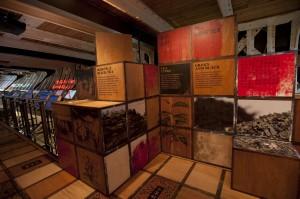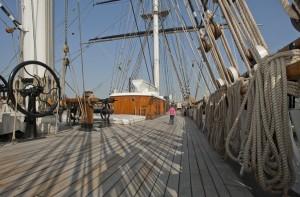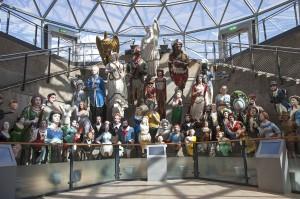17 Jan 2014
Between 2006 and 2012, the Cutty Sark Trust undertook an ambitious conservation project to save the last remaining tea clipper.
Recollections is a series of short interviews with key people who worked on the project. Dr Eric Kentley, Interpretation Author for the project, gives his insights.
What was your role in the project?
My job was to condense Cutty Sark’s long and exciting history in ways that would interest our visitors and at the same time help them to understand just how significant this ship is. It wasn’t just about conveying facts, but about giving context and finding the best medium to tell the ship’s stories. Importantly, I didn’t want visitors to feel bombarded the moment they arrived and to allow them to explore the ship for themselves.
Did Cutty Sark present any unique challenges?
The biggest challenge was actually the route visitors would take around the ship: should we take them down into the dock first, so they can get the fantastic view of the ship or should we get them on board as quickly as possible? There are good arguments for both, but finally we decided that getting people on the ship first would allow us to gradually reveal her stories, to create a paced visit. And the route ends in the dock, where the raised ship is revealed – a space in which visitors can relax and spend as much time as they want.
What key stories did you want to get across about the ship?
Everyone can see Cutty Sark is a beautiful ship but to most of us there’s nothing about her appearance that says she’s from mid-Victorian times, nor that she was built for carrying tea. And unless you are a Robert Burns fan, the name ‘Cutty Sark’ isn’t going to mean much to you. These were the essential messages. But you can’t predict why a visitor has come to the ship: they may have come because they have a lifelong passion for the sea, or they may have come simply because it’s something to do on a day out in Greenwich. What we needed to do was provide enough interpretation so that those who know a lot about ships would feel satisfied, but to deliver it in such a way that the casual visitor did not feel overwhelmed by too much information.
So what was the approach taken to interpreting the ship?
As you go through the ship and into the dock, you move through four separate spaces, so the idea was to create a slightly different experience in each of them. You enter the ship straight into her hold, and the smell and the fabricated chests immediately tell you that she carried tea. The whole of the hold is a busy, dark, experiential space where we can tell the stories about Cutty Sark in the tea trade. Moving up to the ’tween deck, it’s a much more museum–like space with artefacts and showcases. Here we tell more about the voyages of the ship and her crew and what happened to her right up to the early 1950s. Up on the main deck, the interpretation is kept very discrete. It’s a space to enjoy walking the deck of a clipper ship and to see where the crew lived. Down in the dock, the interpretation is about the ship as an icon, about her conservation, but again the interpretation is quite discrete so that nothing detracts from the sensation of being under a ship and appreciating her fabulous shape.
What is your favourite part of the interpretation of the ship?
Designmap and Barry Mazur, the exhibition designers came up with very clever ideas for creating an exciting experience: the Sergeant Pepper- style display of the figureheads, the fabulously rich evocation of 19th century tea chests and so on. But I really like the film that you see just a few moments after you arrive on board. It tells you virtually everything you need to know about the ship and her history in less than three minutes and all the interpretation you see afterwards expands on what you saw in the film.
Take a look on-board in our short trailer:




